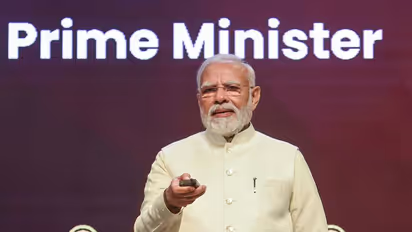World Bank revises India's growth rate projection, but economy recovering stronger than other nations

Synopsis
According to World Bank Chief Economist for South Asia, Hans Timmer, the Indian economy has done well compared to the other countries in South Asia. The Indian economy bounced back from the sharp contraction during the first phase of COVID with relatively strong growth performance
Citing the deteriorating international environment, the World Bank has revised the projected growth rate for the Indian economy for the fiscal year 2022-23 to 6.5 per cent, down from the 7.5 per cent projected in June 2022. The Work Bank, however, noted that India is recovering stronger than the rest of the world.
To note, the Indian economy grew by 8.7 per cent in the previous financial year. The revised projections were revealed in the World Bank's latest South Asia Economic Focus, released ahead of its annual meeting with the International Monetary Fund.
Also Read: Cold and cough syrups made by Haryana-based firm linked to death of 66 kids in Gambia
According to World Bank Chief Economist for South Asia, Hans Timmer, the Indian economy has done well compared to the other countries in South Asia. The Indian economy bounced back from the sharp contraction during the first phase of COVID with relatively strong growth performance, he told the news agency PTI.
Considering that it had the advantage of not having a large external debt, Hans said India had done relatively well. Observing that India's monetary policy was prudent, he said that the Indian economy had done especially well in the services sector.
Haas said that the downgraded forecast for the fiscal year was largely owing to the prevailing international environment, which is deteriorating for India and all other nations. An inflection point is seen in the middle of the year, and the first signs of a slowdown are being witnessed across the world, he said, adding that the second half of the calendar year will be relatively weak in India and many other countries.
Hans cited the global tightening of monetary policy and the slowing of growth in the real economy of high-income countries as two factors behind the slowdown and resultant downgraded forecast for the fiscal year. The global monetary policy tightening results in capital outflows in many developing countries and increase in interest rates and uncertainty there, which has a negative impact on investment.
India is not out of the woods yet
Even though India is not as vulnerable and doing better than some other nations, it is still not out of the woods and needs to navigate the higher commodity prices, Haas said.
The Indian government has set an example for the rest of the world, like expanding social safety nets and using digital ideas, he added.
But the World Bank's Chief Economist for South Asia does not agree with some of the policies of the Indian government.
The Narendra Modi government's reaction to the high commodity prices may backfire in the long run. Citing the government's decision to ban the export of wheat and levy very high tariffs on rice exports, he said even though it was logical to create food security domestically, but such actions create more problems in the rest of the region and globally.
Stating that India needed to address some of the key issues, Hans said, "Although we look at a relatively favourable growth rate, it is growth that is supported by only a small part of the economy. It sounds good, but if it is not coming from a much broader base, then that growth rate of a relatively small part of the economy doesn't translate into significant income growth for all the households.'
'In India, the focus is on the existing big firms and on FDI. The focus is on social safety nets. But this is not enough. You need to integrate more people into the economy," he said.
Also Read: Exclusive: Videos shot moments before avalanche struck Draupadi ka Danda-II
Stay updated with all the latest Business News, including market trends, Share Market News, stock updates, taxation, IPOs, banking, finance, real estate, savings, and investments. Track daily Gold Price changes, updates on DA Hike, and the latest developments on the 8th Pay Commission. Get in-depth analysis, expert opinions, and real-time updates to make informed financial decisions. Download the Asianet News Official App from the Android Play Store and iPhone App Store to stay ahead in business.